Out on the farm, the early colonisers — mānuka, kānuka, akeake, kōhūhū (Pittosporum tenuifolium), and their hardy friends — are the unsung heroes of restoration.
These tough natives thrive where few others can, taking on wind, frost, and open paddocks to create the shelter every young forest needs to get started.
But as every forest grows, those pioneers are just the beginning.
Why enrichment planting matters
Once the fast-growing species have done their job, it’s time to introduce the next generation — the long-lived canopy trees.
These are the species that rise above the pioneers and anchor the structure of a true native forest: tōtara, kāhikatea, rewarewa, and tītoki.
They’re often called the aristocrats of our forests — slow and steady growers that form the backbone of a self-sustaining ecosystem.
Their flowers and fruit attract birds like tūī, kererū, and kōrimako (bellbird), while their height and longevity lock in resilience for decades to come.
Without this step, many sites can “stall” at the 10–15-year mark — full of healthy mānuka and akeake, but without the next layer pushing toward canopy.
Most people’s firsthand experience of forest regeneration is on the edge of an already established block, where the seed source is abundant. But a lot of what we plant doesn’t actually have a reliable seed source nearby to carry it through the next stages — a big reason why we do enrichment planting.
Enrichment planting keeps your site moving through natural succession, turning good early results into a forever-forest.
When to start
If your site is three to five years on from planting, you’re right on cue.
By this stage, shelter is usually well established, grass competition is easing, and the microclimate beneath those pioneers is ready to welcome slower-growing species.
That’s when enrichment planting comes into play — adding diversity, shade, and long-term structure among your existing trees.
How to get started
You don’t need to plant hundreds at once — even a handful of well-placed canopy trees can make a noticeable difference over time.
Start small: Choose species suited to your site’s soil and moisture levels.
Check out our What to Plant Where Guide.Plant beneath shelter: Position them in semi-shaded areas under the existing canopy to help protect them as they establish.
Think long-term: These trees take decades to mature — but once they do, they’ll shape your forest for generations.
A few of our enrichment favourites
Rewarewa — spring blooms that tūī adore; adds height and nectar.
Tōtara — the backbone of the canopy; enduring and adaptable.
Kāhikatea — New Zealand’s tallest native tree; provides structure and habitat.
Planning beyond the first wave
Restoration is a long game — but one that pays off in shade, shelter, birdsong, and biodiversity that lasts.
With the right mix of pioneers and enrichment species, your site won’t just look established — it will function like a living, self-sustaining forest.
If you’ve got a three-to-five-year planting that’s ready for its next chapter, now’s the perfect time to plan your enrichment phase.
Ready to future-proof your planting?
Get in touch for an enrichment assessment or canopy species plan.
